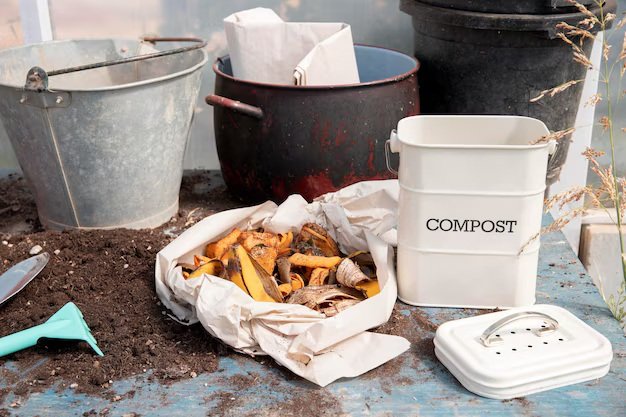Pros and Cons of Vermicomposting
Vermicomposting has been gaining popularity among environmentally conscious individuals and gardeners alike. It’s a natural process where earthworms help break down organic waste, turning it into nutrient-rich compost. This method not only reduces household waste but also enriches the soil, promoting healthier plant growth. However, like any practice, it comes with its own set of challenges. Understanding both the advantages and potential drawbacks is crucial for anyone considering vermicomposting. In this article, we’ll look into the pros and cons of vermicomposting, providing insights to help you decide if it’s the right choice for your gardening and waste management needs.

In This Article
- What Is Vermicomposting?
- Pros of Vermicomposting
- Cons Of Vermicomposting
- Scientific Insights and Research
- Actionable Tips for Successful Vermicomposting
- Conclusion
What Is Vermicomposting?
Vermicomposting is the process of using specific earthworms—mostly Eisenia fetida, or red wigglers—to break down organic waste like fruit peels, vegetable trimmings, and coffee grounds, transforming them into a rich, earthy material called vermicast, or worm castings. This dark, crumbly compost is full of nutrients and beneficial microbes that plants love.
Unlike traditional composting, vermicomposting is low-maintenance and odour-free when done right. It’s perfect for homes, schools, and even small apartments. The worms do most of the work, breaking down waste efficiently without the need for turning or high heat.
To get started, you’ll need a few key components:
- Worms: Red wigglers are the top choice—they thrive in decomposing matter and reproduce quickly.
- Bedding: Materials like shredded newspaper, cardboard, or coconut coir provide a cosy, breathable home for the worms.
- Food Waste: Non-greasy veggie scraps, coffee grounds, and crushed eggshells are ideal.
- Moisture & Airflow: The bedding should feel like a damp sponge—moist but not soggy. Proper ventilation ensures the worms stay healthy and active.
Pros of Vermicomposting
1. Enhanced Soil Fertility
One of the most immediate and noticeable benefits of vermicomposting is the boost it gives to soil fertility. Vermicompost is rich in essential nutrients like nitrogen, phosphorus, and potassium, all in forms that plants can readily absorb. These nutrients are crucial for healthy plant growth and development.
But it’s not just about the nutrients. Vermicompost also introduces beneficial microorganisms into the soil. These microbes play a vital role in breaking down organic matter, making nutrients more accessible to plants, and even protecting against certain soil-borne diseases. According to a study published in the journal Agronomy, vermicompost contains beneficial microorganisms, such as bacteria that can suppress fungal and bacterial diseases and pests.
In fact, research has shown that vermicomposting can increase soil nitrogen content by up to 42%, phosphorus by 29%, and potassium by 57%. These significant increases can lead to more robust plant growth and higher yields.
2. Improved Soil Structure
Healthy soil isn’t just about nutrients; it’s also about structure. Vermicompost enhances soil structure by increasing its porosity, which improves aeration and drainage. This means that water and nutrients can move more freely through the soil, reaching plant roots more effectively.
The organic matter in vermicompost also has a high water-retention capacity, helping soil stay moist longer and reducing the need for frequent watering. This is particularly beneficial in areas prone to drought or for gardeners looking to conserve water.
Additionally, the presence of earthworms in vermicomposting naturally aerates the soil as they move through it, creating channels that allow for better root penetration and overall plant health.
3. Natural Pest and Disease Suppression
One of the lesser-known benefits of vermicomposting is its ability to help control pests and diseases naturally. The beneficial microbes present in vermicompost can suppress harmful pathogens in the soil, reducing the incidence of plant diseases.
For example, studies have shown that vermicompost can suppress diseases caused by pathogens like Pythium, Rhizoctonia, and Verticillium, which are common culprits in plant root diseases. These microbes compete with harmful pathogens for resources and space, effectively keeping them in check.
Moreover, using vermicompost can reduce the need for chemical pesticides, leading to a healthier garden ecosystem and reducing your exposure to potentially harmful chemicals.
4. Waste Reduction and Environmental Impact
Vermicomposting is an excellent way to reduce household waste and its environmental impact. Organic waste, such as food scraps and yard clippings, makes up a significant portion of household waste that often ends up in landfills. In landfills, this organic matter decomposes anaerobically, producing methane, a potent greenhouse gas.
By diverting organic waste to a vermicomposting system, you not only reduce the amount of waste sent to landfills but also decrease methane emissions. According to the USDA, food waste is responsible for 58% of landfill methane emissions. Therefore, vermicomposting contributes to a circular economy and helps mitigate climate change.
Additionally, the end product—vermicompost—is a valuable resource that can be used to enrich your garden soil, closing the loop in your waste cycle.
5. Economic Benefits
Beyond the environmental benefits, vermicomposting can also yield significant economic advantages. By producing your own vermicompost, you can reduce or even eliminate the need for chemical fertilisers and pesticides, leading to cost savings.
In India, for instance, farmers who adopted vermicomposting practices reported a 30-40% reduction in input costs and a 15-25% increase in crop yields. Another study found that incorporating vermicompost reduced the NPK input by half in tomato cultivation, resulting in lower overall costs.
Moreover, vermicomposting can open up new income streams. Excess vermicompost can be sold to other gardeners or farmers, and some individuals have even started small businesses around vermicomposting, supplying worms or compost to others.
Learn More: Are Worms Good for Gardens?
Cons Of Vermicomposting
1. Potential for Odour and Pests
One of the first issues new vermicomposters might encounter is unpleasant smells or unwanted pests. A well-maintained worm bin should emit a mild, earthy aroma. However, if the balance is off, it can develop foul odours and attract pests like gnats or rodents.
The key to preventing this is proper management. Ensure you’re not overfeeding the worms and that you’re covering food scraps with adequate bedding material. Avoid adding meat, dairy, or oily foods, as these can decompose anaerobically, leading to strong odours and attracting pests. According to the U.S. Environmental Protection Agency (EPA), maintaining your worm bin correctly should prevent odours and pests.
2. The Initial Learning Curve
Starting vermicomposting can be straightforward, but mastering the balance of conditions requires attention. Maintaining the right moisture level is crucial; too dry, and worms may die; too wet, and it can lead to foul odours. Feeding the worms inappropriate food, such as meat or dairy, can also cause issues.
According to the Rodale Institute, beginners should start with a manageable number of worms and ensure the bin is placed in a cool, dark location with minimal temperature fluctuations to prevent freezing or overheating.
3. Limited Capacity
Home vermicomposting systems have a limited capacity. Typically, a standard bin can process about 2 to 3 pounds of food waste per week, which might suffice for a small household. For larger families or those producing more kitchen waste, this capacity might be insufficient. The Oregon State University Extension Service notes that a 14-gallon worm bin can process approximately 2 pounds of kitchen waste per week, suitable for a family of two or three.
Scaling up requires additional bins or larger systems, which might not be feasible for everyone.
4. Temperature Sensitivity
Red wigglers, commonly used in vermicomposting, thrive in temperatures between 55°F and 77°F (13°C to 25°C). Temperatures outside this range can slow down their activity or even be fatal. In colder climates, indoor bins become essential to maintain optimal temperatures. According to the Worm Wrangler, maintaining the red wiggler temperature within the 71°F to 89°F (22°C to 32°C) range ensures they break down waste efficiently.
Temperature fluctuations can be challenging to manage, especially in regions with extreme climates. Proper insulation and monitoring are crucial to ensure the worms’ survival and efficiency.
5. Harvesting Can Be Tedious
Separating worms from the finished compost, known as castings, can be a labour-intensive process. Without specialised equipment, it often involves manually sorting through the compost to separate the worms. Continuous flow-through systems can simplify this process by allowing compost to be harvested from the bottom while adding fresh waste on top. However, these systems can be more expensive and require additional space. The Urban Worm Company describes continuous flow vermicomposting as a method where composting worms are fed organic matter from the top, and worm castings are eventually harvested from the bottom, facilitating easier separation.
For hobbyists or those with limited space, the manual harvesting process can be a deterrent.
Scientific Insights and Research
Research has shown that vermicomposting can effectively reduce harmful pathogens in organic waste. A study found that earthworms’ digestive processes can eliminate up to 96% of ingested bacterial taxa, including harmful bacteria like Escherichia coli and Salmonella spp.. This natural sanitation process makes vermicompost a safer option for enriching soil in home gardens and farms.
Beyond pathogen reduction, vermicompost enhances soil microbial activity, which is crucial for plant health. A meta-analysis reported that vermicompost application led to average increases of 26% in commercial yield, 13% in total biomass, 78% in shoot biomass, and 57% in root biomass. These improvements are attributed to the rich microbial life and nutrients in vermicompost, which promote robust plant growth.
Moreover, vermicompost improves soil structure and water retention, making plants more resilient to environmental stresses like drought. It also introduces beneficial microbes and enzymes that suppress plant diseases and pests, reducing the need for chemical fertilisers and pesticides.
Comparative Analysis: Vermicomposting vs. Traditional Composting
| Aspect | Vermicomposting | Traditional Composting |
|---|---|---|
| Processing Time | 2–3 months | 3–6 months |
| Nutrient Content | Higher, with beneficial microbes | Moderate |
| Odor Control | Requires careful management | Less prone to odors |
| Pest Attraction | Higher if not managed properly | Lower |
| Space Requirements | Suitable for small spaces | Requires more space |
| Temperature Sensitivity | Sensitive to temperature extremes | More tolerant of temperature variations |
Actionable Tips for Successful Vermicomposting
- Start Small: Begin with a compact bin, like an 8 to 14-inch deep plastic container. This size is manageable and allows you to learn the process without feeling overwhelmed.
- Choose the Right Worms: Opt for red wigglers (Eisenia fetida). These worms are excellent at breaking down organic waste and thrive in composting environments.
- Maintain Optimal Conditions: Keep the bin’s moisture level similar to a wrung-out sponge and maintain temperatures between 55–77°F (13–25°C). This ensures your worms stay active and healthy.
- Feed Appropriately: Provide your worms with fruit and vegetable scraps, coffee grounds, and crushed eggshells. Avoid meat, dairy, oily foods, and citrus, as these can harm the worms and attract pests.
- Monitor Regularly: Check your bin weekly for any signs of odour, pests, or worm distress. Regular monitoring helps you address issues promptly and maintain a healthy composting environment.
Learn More: Can You Compost Rice and Pasta
Conclusion
Vermicomposting presents a sustainable and efficient method for managing organic waste and enhancing soil health. While it requires careful management and patience, the benefits—ranging from improved plant growth to environmental conservation—make it a worthwhile endeavour for gardeners, farmers, and eco-conscious individuals alike.







